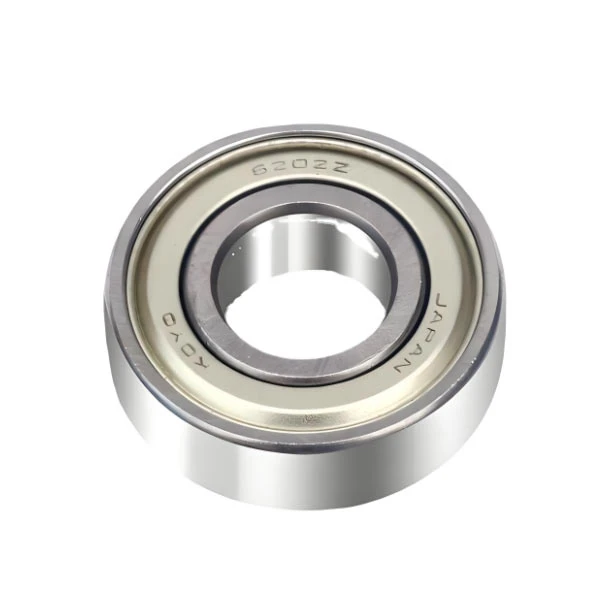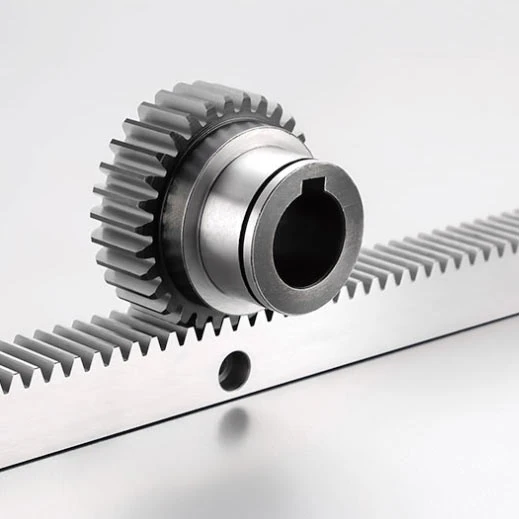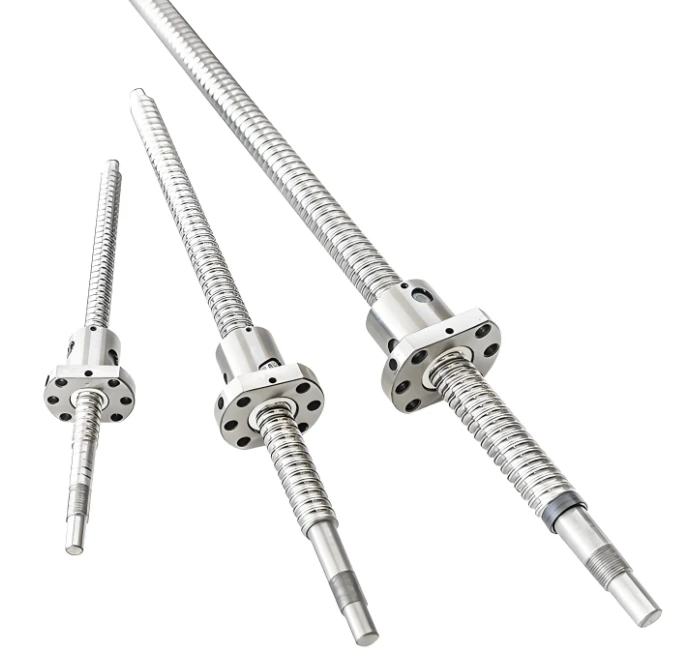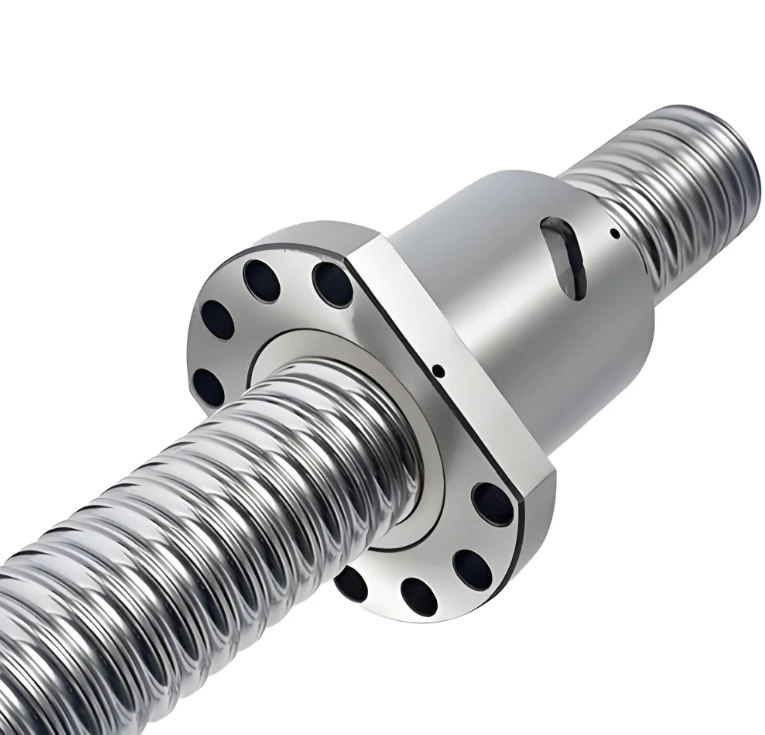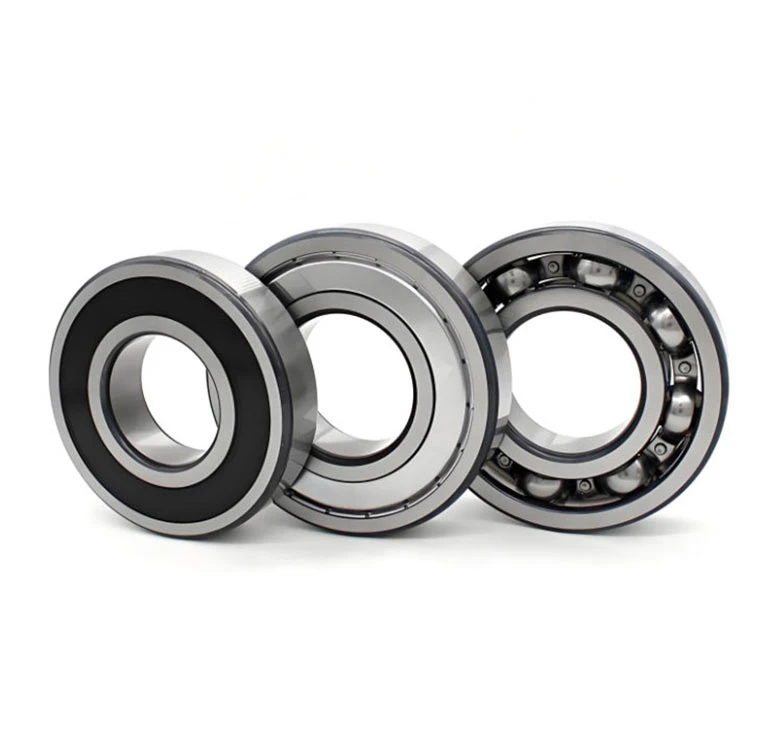Understanding the Pivotal Role of Ball Screw Technology in Modern Industrial Motion
In the intricate landscape of modern industrial automation and precision machinery, the ball screw stands as an indispensable component, serving as the backbone for converting rotary motion into precise linear motion. This fundamental mechanical device is comprised of a screw spindle and a nut, with precision-ground helical grooves. Within these grooves, recirculating balls act as the bearing elements between the nut and the screw, significantly reducing friction compared to traditional lead screws. This design innovation is not merely an incremental improvement; it represents a paradigm shift in motion control, enabling higher efficiency, greater accuracy, and extended operational life across a myriad of applications. The demand for these sophisticated linear actuators continues to surge, driven by the escalating need for automation, miniaturization, and precision in manufacturing processes globally. Industries ranging from aerospace and medical to automotive and semiconductor manufacturing heavily rely on the unparalleled performance offered by ball screw mechanisms. The technological evolution of ball screws has been relentless, with continuous advancements in material science, manufacturing precision, and design optimization leading to products that can withstand extreme conditions, deliver sub-micron accuracy, and operate with minimal maintenance requirements. This article delves deep into the multifaceted world of ball screws, exploring their foundational principles, the intricate manufacturing processes that bring them to life, their diverse applications, and the critical parameters that define their performance. We will also examine the latest industry trends, offering insights into how these pivotal components are shaping the future of industrial motion. The SFU1605 C3 Ball Screw Ground Ball Screw, for instance, exemplifies the high-precision, low-friction capabilities demanded by today's sophisticated machinery, providing a clear illustration of how specific product designs address complex engineering challenges. Its C3 accuracy class and ground finish ensure exceptional positional repeatability and smooth operation, critical for applications requiring stringent tolerances. Understanding the nuances of ball screw technology is paramount for engineers and B2B decision-makers seeking to optimize system performance, reduce energy consumption, and enhance the reliability of their industrial equipment. The transition from traditional sliding friction mechanisms to the rolling friction inherent in ball screws has fundamentally transformed the capabilities of CNC machinery, robotics, and other automated systems, enabling faster cycle times, reduced wear, and superior surface finishes in machined parts. Furthermore, the ability to achieve high thrust forces with relatively small input torques makes ball screws exceptionally energy efficient, contributing to lower operating costs and a reduced environmental footprint, aligning perfectly with modern industrial sustainability goals.
The global market for ball screw technology is experiencing robust growth, propelled by the relentless drive towards industrial automation, the proliferation of robotics, and the increasing demand for high-precision manufacturing equipment across various sectors. According to recent market analysis reports, the global ball screw market size was valued at approximately USD 2.5 billion in 2022 and is projected to reach over USD 3.8 billion by 2030, exhibiting a Compound Annual Growth Rate (CAGR) of around 5.5% during the forecast period. This growth is predominantly fueled by the expansion of the machine tool industry, the rapid adoption of automation in packaging and material handling, and significant investments in semiconductor manufacturing. Geographically, Asia-Pacific dominates the market, primarily due to the high concentration of manufacturing facilities and the continuous industrialization in countries like China, Japan, and South Korea, which are leading consumers and producers of advanced machinery. North America and Europe also maintain substantial market shares, driven by technological advancements and the demand for high-performance motion control solutions in industries such as aerospace and medical devices. Key industry trends include the development of compact and lightweight ball screw designs for space-constrained applications, the integration of smart sensors for predictive maintenance and condition monitoring, and the increasing demand for customized solutions to meet specific application requirements. Manufacturers are also focusing on improving the efficiency and durability of their products through advanced surface treatments and novel material compositions, aiming to extend service life and reduce total cost of ownership. The emphasis on energy efficiency is also paramount, with continuous improvements in design to minimize friction and enhance power transmission, aligning with global sustainability initiatives. Furthermore, the rise of Industry 4.0 and the Internet of Things (IoT) is driving the development of "smart" ball screw systems that can communicate operational data, enabling real-time monitoring, remote diagnostics, and proactive maintenance strategies, thereby minimizing downtime and maximizing productivity. This shift towards intelligent motion components underscores the critical role that ball screws play in the ongoing digital transformation of industrial processes. The synergy between high-precision mechanical components like ball screws and advanced digital control systems is unlocking new levels of performance and flexibility in automated manufacturing environments.
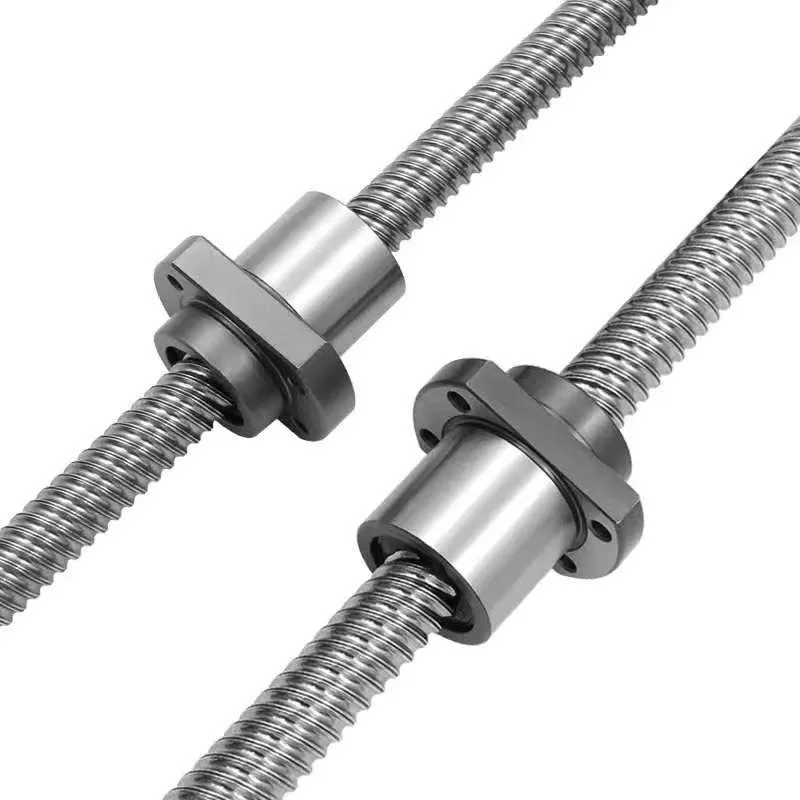
The Meticulous Craft: Deconstructing the Ball Screw Manufacturing Process
The production of a high-precision ball screw is a testament to advanced engineering and meticulous manufacturing. The journey begins with the selection of high-grade materials, typically specialized alloy steels such as 50CrMo4 (EN41B), GCr15 (SAE 52100), or other proprietary tool steels, chosen for their superior hardness, wear resistance, and fatigue strength. These materials are critical to ensuring the longevity and performance of the finished product, especially under demanding operational conditions. The manufacturing process broadly involves several intricate stages:
1. Material Preparation: High-quality steel bars are sourced and cut to initial lengths, followed by annealing to relieve internal stresses and improve machinability. This foundational step is crucial for preventing deformation and cracking during subsequent processing. The quality of the raw material directly influences the final product's integrity and lifespan.
2. Thread Rolling or Grinding:
a. Rolled Ball Screw: This method involves cold-forming the threads using high-pressure rolling dies. It is a cost-effective process suitable for applications where moderate precision is acceptable. The material is plastically deformed, which also enhances its surface hardness and fatigue strength. Rolled ball screws are commonly found in general industrial machinery and applications requiring robust, economical linear motion solutions.
b. Ground Ball Screw: For superior precision, the threads are meticulously ground using specialized CNC grinding machines after heat treatment. This process removes material with extreme accuracy, creating precise thread profiles and achieving very tight pitch tolerances (e.g., C0, C1, C3, C5 accuracy classes according to JIS or ISO standards). The grinding process is crucial for achieving the low backlash and high positional accuracy required in applications such as machine tools and semiconductor equipment. The SFU1605 C3 Ball Screw Ground Ball Screw is a prime example of this high-precision manufacturing, where "ground" signifies the superior accuracy and finish achieved through this method.
3. Heat Treatment: After initial machining (or rolling), the screw shaft undergoes heat treatment, typically induction hardening or through-hardening, to achieve the desired surface hardness (e.g., HRC 58-62) and core toughness. This step is vital for wear resistance and preventing permanent deformation under load, significantly extending the operational life of the ball screw. Precise control of temperature and cooling rates is essential to avoid distortion and achieve optimal metallurgical properties.
4. Precision Machining and Finishing: Post-hardening, secondary machining operations are performed, including grinding of the journal ends, keyways, and mounting features. The nut and end caps are also precisely machined. For ground ball screws, the thread grinding itself is the most critical precision machining step, ensuring the precise helical path for the balls. Lapping and polishing may also be employed for ultra-high precision applications to refine surface finishes and reduce friction.
5. Assembly and Inspection: The ball screw nut, balls, and recirculation components are assembled with extreme care in cleanroom environments to prevent contamination. The balls, often made of chrome steel or ceramic (e.g., silicon nitride for specific applications due to their lighter weight and higher stiffness), are precisely sized to match the ground grooves, creating the pre-load necessary for zero-backlash operation. Each assembled unit undergoes rigorous quality control inspections, adhering to international standards such as ISO 3408 for ball screws and ISO 12240 for bearings, as well as ANSI/AGMA standards for gearing. These inspections include precise measurements of lead accuracy, cumulative pitch error, runout, backlash, and surface roughness.
6. Lubrication and Packaging: Finally, the ball screw is typically pre-lubricated with a suitable grease or oil to ensure smooth operation from installation. Protective packaging is then applied to prevent damage and contamination during transit.
The entire manufacturing process is governed by stringent quality management systems (e.g., ISO 9001 certification) to ensure consistent product quality and reliability. The choice of manufacturing process, be it rolling or grinding, directly impacts the precision class and cost of the ball screw, allowing manufacturers to cater to a wide spectrum of industrial requirements. For example, ground ball screws are indispensable in high-end CNC machine tools, robotics, and aerospace applications where positional accuracy and repeatability are paramount, often achieving lead accuracies within microns. In contrast, rolled ball screws offer a more economical solution for applications where high thrust and moderate precision are sufficient, such as material handling systems or general automation. The precision of the manufacturing process, coupled with the inherent low-friction design, directly contributes to advantages like energy saving through reduced power consumption, and enhanced corrosion resistance through material selection and surface treatments, making them ideal for challenging environments like petrochemical, metallurgy, and water treatment (e.g., wastewater and potable water systems) where reliability and longevity under aggressive conditions are critical.
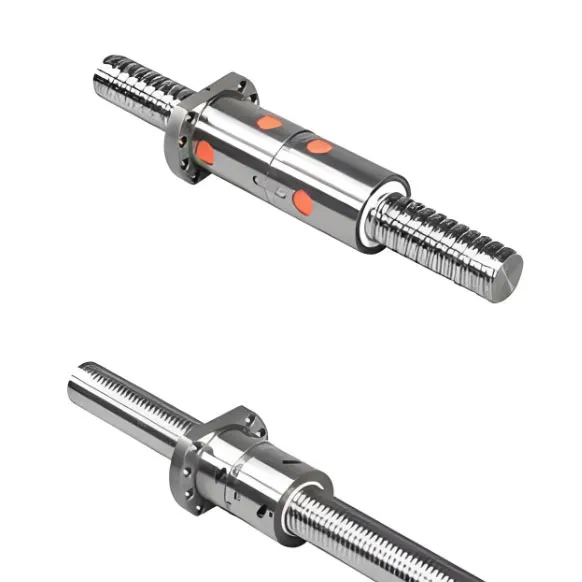
Technical Parameters and Performance Metrics of Ball Screw Systems
Selecting the appropriate ball screw for a specific application requires a deep understanding of its technical parameters and performance metrics. These parameters define the screw's capability, precision, and suitability for various operational environments. Key specifications include:
1. Nominal Diameter (D): This refers to the outer diameter of the screw shaft. Common diameters range from a few millimeters (e.g., 6mm) for compact linear stages to over 100mm for heavy-duty industrial machinery. The diameter influences the screw's rigidity, load capacity, and susceptibility to buckling.
2. Lead (L): The lead is the axial distance the nut travels for one complete revolution of the screw. It dictates the linear speed for a given rotary input. Common leads range from 1mm (fine pitch) to 50mm or more (coarse pitch). A smaller lead provides higher resolution and thrust but lower linear speed, while a larger lead offers higher speeds but less positional accuracy for a given motor resolution. For example, the SFU1605 C3 Ball Screw Ground Ball Screw typically indicates a 16mm nominal diameter and a 5mm lead, denoting a fine-pitch, high-resolution screw.
3. Accuracy Grade: This critical parameter defines the precision of the ball screw. Grades are typically classified by ISO or JIS standards. For ground ball screws, common grades are C0, C1, C3, C5, C7, C10, where C0 is the highest precision (lowest lead deviation over a given length) and C10 is the lowest. Rolled ball screws often fall into C7 or C10 categories. The C3 accuracy class of the SFU1605 C3 Ball Screw signifies excellent positional accuracy, suitable for high-precision CNC machine tools and measuring equipment where cumulative pitch error must be minimized over the entire travel length.
4. Dynamic and Static Load Capacity (Ca and Coa): These values indicate the maximum permissible axial load that the ball screw can sustain without causing permanent deformation or excessive fatigue. Dynamic load capacity (Ca) relates to the load under continuous motion, while static load capacity (Coa) is for static or momentary non-moving loads. These are crucial for calculating the expected life of the ball screw bearing components.
5. Life Expectancy (L10 Life): Expressed in revolutions or distance, this metric (e.g., L10 life) refers to the total number of revolutions or travel distance that 90% of a group of identical ball screws will achieve without exhibiting fatigue failure under specified operating conditions. It's calculated based on the applied load and dynamic load capacity, often utilizing formulas derived from ISO 3408-5. Factors like lubrication, temperature, and contamination significantly influence actual lifespan. A typical ball screw and ball nut assembly can offer operational lives in the range of millions to tens of millions of revolutions when properly maintained and operated within specified load limits.
6. Critical Speed: This is the rotational speed at which the screw shaft's natural frequency of vibration resonates, potentially leading to instability and damage. It is a crucial consideration for long, slender ball screws operating at high speeds and must be avoided during design.
7. DN Value: A factor indicating the suitability of a ball screw for high-speed operation, calculated by multiplying the nominal diameter (D) in mm by the maximum rotational speed (N) in rpm. Higher DN values (e.g., 80,000 for standard, 100,000+ for high-speed designs) indicate better high-speed performance capabilities.
8. Backlash: The axial clearance or play between the nut and the screw when the direction of motion is reversed. While some backlash is inherent in most designs, pre-loading (using oversized balls or double nuts) can eliminate or significantly reduce it, achieving a "zero-backlash" condition critical for precision positioning.
9. Rigidity: Refers to the resistance of the ball screw system to elastic deformation under load. Both axial rigidity and torsional rigidity are important, particularly in applications requiring high stiffness and minimal deflection.
These parameters are interdependent and must be considered holistically during the design and selection process. Understanding the interplay between lead, diameter, accuracy, and load capacities allows engineers to optimize the performance and longevity of their motion control systems, ensuring that the chosen ball screw meets the exact demands of its intended application.
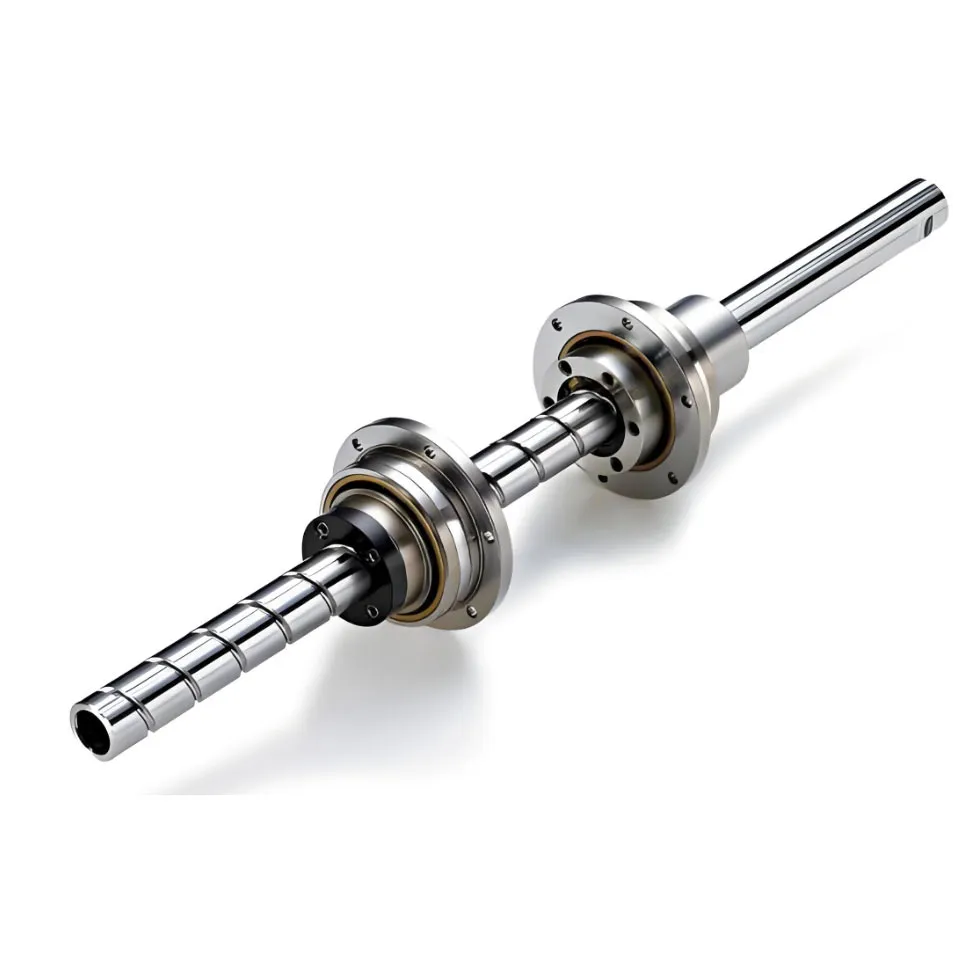
Comparative Table: Common Ball Screw Parameters
| Parameter | Description | Typical Range/Value | Impact on Performance |
|---|---|---|---|
| Nominal Diameter (D) | Outer diameter of the screw shaft. | 6mm to 120mm+ | Influences rigidity, load capacity, critical speed. |
| Lead (L) | Axial travel distance per revolution. | 1mm to 50mm+ | Determines linear speed and resolution. |
| Accuracy Grade | Precision level (deviation in lead accuracy). | C0 (highest) to C10 (lowest) | Impacts positional accuracy, repeatability. (e.g., SFU1605 C3 means 0.008mm/300mm max lead error). |
| Dynamic Load Capacity (Ca) | Max permissible load under motion. | Hundreds of N to hundreds of kN | Crucial for calculating service life. |
| Critical Speed | Resonance speed of the screw shaft. | Varies significantly with length and diameter. | Must be avoided; limits maximum operating speed. |
| DN Value | Diameter x RPM, indicates high-speed capability. | Standard: 80,000; High-speed: 100,000+ | Higher values allow faster operation. |
| Backlash | Axial play between nut and screw. | Typically 0.05mm - 0.2mm (standard), 0mm (pre-loaded) | Affects positional accuracy and repeatability. |
Versatile Applications and Unparalleled Advantages of Ball Screw Technology
The inherent design of the ball screw, which replaces sliding friction with rolling friction through the use of precisely engineered ball screw balls, endows it with a suite of advantages that make it a cornerstone in numerous advanced industrial applications. These benefits are not merely incremental; they fundamentally transform the capabilities of machinery, enabling higher throughput, superior product quality, and reduced operational costs. One of the most significant advantages is its remarkably high efficiency, typically ranging from 90% to 95%. This starkly contrasts with traditional lead screws, which often operate at efficiencies below 50%. The minimal friction in a ball and screw mechanism means that less power is required to generate a given amount of thrust, leading directly to substantial energy savings. This is particularly crucial in large-scale industrial operations where numerous motion axes are in constant use, translating into significant reductions in energy consumption and operational expenses over the lifetime of the equipment. For instance, in a typical CNC machining center, a shift from lead screws to ball screws can reduce the power consumption of linear axes by 30-50%, demonstrating a clear economic benefit. Furthermore, the low friction also means less heat generation, which is vital for maintaining thermal stability and accuracy in precision applications. Excessive heat can lead to thermal expansion, causing dimensional inaccuracies in machined parts, a critical concern in industries demanding micron-level precision.
Another paramount advantage is the exceptional positional accuracy and repeatability offered by ground ball screw systems. With accuracy grades reaching C0 or C1, these components can achieve positional errors as low as a few micrometers over extended travel lengths. This level of precision is indispensable for applications like high-end CNC machine tools, where the quality of the machined surface and the dimensional integrity of the part are directly dependent on the accuracy of the linear motion. In semiconductor manufacturing, for example, the precise positioning of wafers requires such exacting standards, making ball screw technology indispensable. The ability to achieve virtually zero backlash through pre-loading techniques further enhances repeatability, ensuring that the tool or workpiece returns to the exact same position every time, irrespective of the direction of motion. This capability is critical for complex multi-axis interpolation and contouring operations. The stiffness of the ball screw system is also a significant advantage. Its robust construction and the rolling contact of the balls provide high axial and torsional rigidity, minimizing deflection under load. This stiffness contributes directly to the stability of the machine, reducing vibration and chatter, and ultimately improving the surface finish and dimensional accuracy of manufactured components. For instance, in heavy-duty presses or injection molding machines, the high rigidity of a ball screw bearing setup ensures consistent clamping forces and precise mold alignment, leading to higher quality products and reduced material waste.
The extended service life and reduced maintenance requirements are also compelling reasons for the widespread adoption of ball screw technology. Unlike lead screws that rely on sliding friction, which inherently causes wear and requires frequent lubrication, the rolling action in a ball and screw mechanism significantly reduces wear on the mating surfaces. When properly lubricated and protected from contaminants, a ball screw can operate for tens of thousands of hours or millions of cycles before requiring significant maintenance or replacement. This longevity translates into lower total cost of ownership (TCO) for industrial equipment, as downtime for maintenance is minimized and replacement part expenditures are reduced. Moreover, many modern ball screws feature integrated lubrication systems or sealed designs, further extending their maintenance intervals and reliability in harsh industrial environments. The ability to handle high thrust loads with relatively small input torques is another crucial benefit. This characteristic makes them ideal for applications requiring substantial force exertion, such as plastic injection molding machines, metal forming presses, and large gantry systems, where powerful linear motion is required without excessive motor size or energy consumption. The SFU1605 C3 Ball Screw Ground Ball Screw, with its robust design and precision engineering, excels in such demanding scenarios, providing reliable and efficient linear actuation.
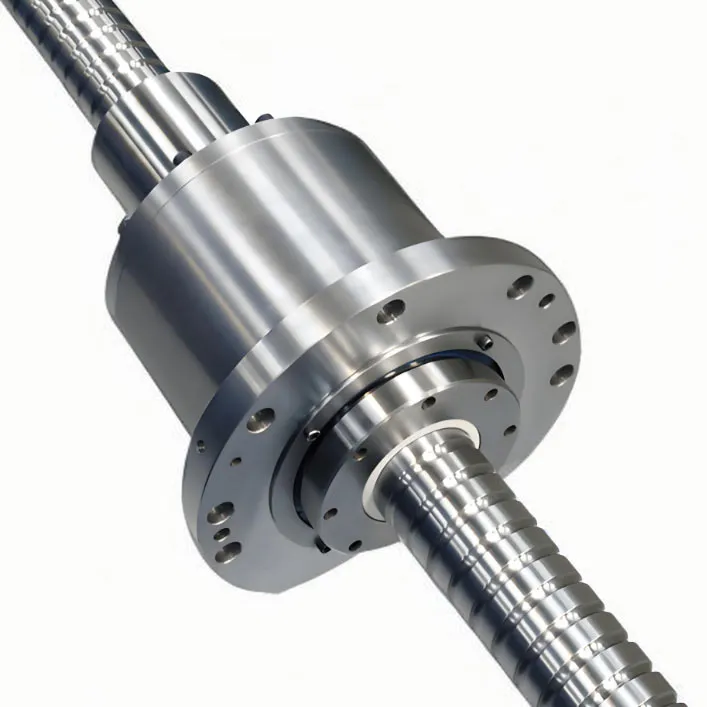
The broad applicability of ball screw technology spans across a vast array of industries, each benefiting from its specific advantages. In the machine tool industry, from small-scale engraving machines to massive gantry mills, ball screw systems are integral to the linear axes of CNC lathes, milling machines, grinders, and machining centers. They provide the precise, rapid, and repeatable movements necessary for cutting, shaping, and finishing materials with high accuracy and efficiency. Without the precision afforded by components like the SFU1605 C3 Ball Screw, achieving the intricate geometries and tight tolerances required in modern manufacturing would be virtually impossible. In the rapidly expanding field of industrial robotics, ball screw actuators drive the linear joints of Cartesian robots, SCARA robots, and robotic arms, enabling agile and precise manipulation of workpieces and tools. Their high force-to-size ratio and excellent repeatability are critical for tasks such as pick-and-place, assembly, and welding in automated production lines. The semiconductor industry relies heavily on ultra-high precision ball screw systems for wafer handling, inspection equipment, and lithography machines, where sub-micron positioning is the norm. The pristine environment of cleanrooms also demands components with minimal particulate generation, which precisely ground ball screw designs can offer.
Beyond these high-tech sectors, ball screw applications extend into medical equipment, where they are used in MRI machines, CT scanners, surgical robots, and patient positioning systems, requiring smooth, precise, and reliable motion for diagnostic and therapeutic purposes. The aerospace industry utilizes them in flight control surfaces, landing gear actuation, and satellite positioning systems, where reliability under extreme conditions and high load capacity are paramount. In general automation, ball screw technology powers automated guided vehicles (AGVs), material handling systems, packaging machinery, and assembly lines, improving speed, efficiency, and reliability of logistics and production processes. The automotive industry employs them in assembly lines, welding robots, and testing equipment. Furthermore, in specialized industries such as petrochemical and metallurgy, where conditions can be harsh, custom ball screw designs with enhanced corrosion resistance (e.g., stainless steel, special coatings) and robust sealing mechanisms are employed for valve actuation, furnace control, and material feeding systems, ensuring reliable operation even in the presence of corrosive agents, high temperatures, or abrasive particles. For instance, in large-scale valve actuation within petrochemical plants, a robust ball screw and ball nut assembly ensures precise control of fluid flow, contributing to operational safety and efficiency. In the water supply and drainage sector, specifically in large-scale gate valve or sluice gate actuation within municipal water treatment plants or hydroelectric dams, heavy-duty ball screw systems provide the necessary powerful and precise linear force to open and close massive gates, ensuring reliable flow control and safety. Their ability to deliver high thrust with minimal backlash, combined with long operational life and low maintenance, makes them ideal for critical infrastructure applications where failure is not an option. This wide adoption across diverse sectors underscores the versatility and indispensable nature of ball screw technology in driving forward industrial progress and precision manufacturing.
Manufacturer Comparison: Navigating the Landscape of Ball Screw Suppliers
The global market for ball screw technology is populated by a diverse array of manufacturers, each with distinct specializations, product offerings, and geographical strengths. Understanding the differences between these key players is crucial for B2B decision-makers seeking the optimal motion control solution for their specific applications. Prominent manufacturers like ball screw THK (Japan), NSK (Japan), Bosch Rexroth (Germany), Schneeberger (Switzerland), and HIWIN (Taiwan) represent the vanguard of innovation and quality in this sector.
THK is widely recognized as a pioneer in linear motion technology, having developed the first commercialized linear motion guide. Their ball screw products are highly regarded for their precision, reliability, and innovative designs, including their Caged Ball technology which improves smoothness and extends life. THK offers a comprehensive range from miniature to large-diameter ball screws, catering to high-end machine tools, semiconductor equipment, and medical devices. Their products, often featuring patented recirculation systems for their ball screw balls, are synonymous with Japanese engineering excellence and are frequently chosen for applications demanding the utmost in accuracy and durability.
NSK, another Japanese powerhouse, is a global leader in bearings and motion control products. Their ball screw offerings are extensive, encompassing ground and rolled types, and are known for their high load capacities and long service life. NSK emphasizes robust design and stringent quality control, making their products a preferred choice in heavy machinery, robotics, and automotive manufacturing. They also offer specialized types, such as high-speed ball screws and those designed for cleanroom environments, demonstrating their versatility and commitment to addressing diverse industrial needs.
Bosch Rexroth, a German engineering giant, provides integrated drive and control solutions, with their ball screw range being a critical component of their comprehensive portfolio. Their products are characterized by robust construction, high rigidity, and excellent performance in demanding industrial applications, particularly in machine tools and automation systems. Bosch Rexroth focuses on energy efficiency and smart manufacturing solutions, often integrating their ball screws into complete linear motion systems that include drives, motors, and controls. Their emphasis on system integration ensures seamless operation and optimized performance across various applications.
Schneeberger, a Swiss company, is renowned for its ultra-precision linear motion products, including high-accuracy ball screw systems. They specialize in ground ball screws for the most demanding applications in metrology, optics, and semiconductor manufacturing, where sub-micron precision is paramount. Their expertise lies in delivering customized solutions for complex motion challenges, leveraging their deep understanding of precision grinding and measurement techniques. Their commitment to extreme precision sets them apart in the high-end segment of the market.
HIWIN, based in Taiwan, has emerged as a significant global player, offering a broad spectrum of ball screw products that balance performance with cost-effectiveness. They provide a wide range of ground and rolled ball screws, linear guides, and integrated motion control solutions. HIWIN is known for its ability to produce high volumes while maintaining competitive pricing and solid quality, making them a popular choice for general automation, machine tools, and medical equipment across various budget points. Their aggressive expansion and continuous R&D efforts have solidified their position as a reliable alternative to traditional market leaders.
When comparing these manufacturers, factors such as accuracy grade (e.g., C3 for SFU1605 C3 Ball Screw), lead time, technical support, price-to-performance ratio, and customization capabilities become paramount. While premium brands like THK and NSK might offer the absolute highest precision and unique patented technologies, other manufacturers like HIWIN provide excellent value with robust standard products and increasing capabilities in customization. Ultimately, the best choice depends on the specific application requirements, budget constraints, and the level of technical support needed. Evaluating manufacturer reputation, adherence to international standards (e.g., ISO, JIS), and customer service track record are also essential steps in making an informed decision. Furthermore, considering the availability of local distribution and service networks can be a critical factor, especially for minimizing downtime and ensuring timely support for complex industrial operations.
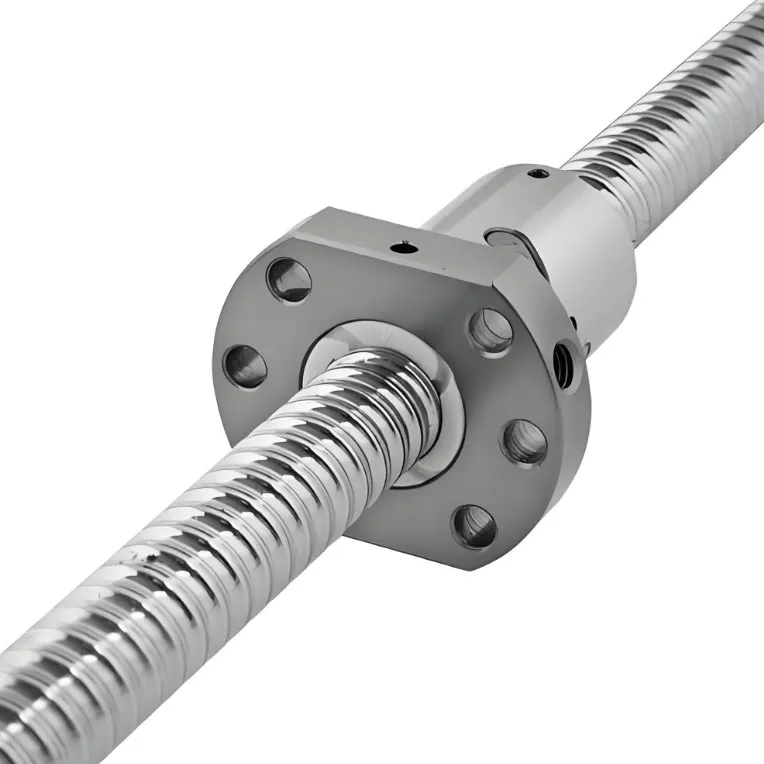
Manufacturer Comparison: Ball Screw Key Offerings
| Manufacturer | Origin | Specialization / Strengths | Key Product Series/Features | Typical Applications |
|---|---|---|---|---|
| THK | Japan | Pioneer in LM Guides; high precision, patented Caged Ball technology. | BNK, BSS, HBN series; high-speed, low noise, long life. | Machine Tools, Semiconductor, Medical, Robotics. |
| NSK | Japan | Global bearing leader; robust, high load capacity, extensive range. | HTF, W-series, A-series; high rigidity, low noise, cleanroom options. | Heavy Machinery, Robotics, Automotive, General Industrial. |
| Bosch Rexroth | Germany | Integrated drive & control systems; robust industrial solutions. | Rolled (Ecoline) and Ground (Precisions); high load, energy efficiency. | Automation, Machine Tools, Packaging, Assembly. |
| Schneeberger | Switzerland | Ultra-precision linear motion; highly customized solutions. | BSN, BSP series; highest accuracy grades (C0), specialized applications. | Metrology, Optics, Semiconductor, High-end Scientific Instruments. |
| HIWIN | Taiwan | Cost-effective, wide range of standard and custom products. | Ground and Rolled types (e.g., SFU, DFU series); good balance of quality and price. | General Automation, Machine Tools (mid-range), Medical, Packaging. |
Tailored Excellence: Custom Ball Screw Solutions for Unique Challenges
While standard ball screw products like the SFU1605 C3 Ball Screw Ground Ball Screw cater to a vast range of industrial needs, numerous applications present unique challenges that necessitate tailored solutions. The ability to provide custom ball screw designs is a hallmark of an expert manufacturer, reflecting deep engineering knowledge and flexible production capabilities. Customization extends beyond merely modifying standard lengths or end-machining; it encompasses alterations in material composition, thread geometry, nut design, ball circulation methods, and the integration of specialized features to meet specific performance requirements or environmental constraints.
One common area for customization is material selection. For applications exposed to corrosive environments, such as those in petrochemical processing, marine equipment, or food and beverage industries, standard alloy steel ball screws may not suffice. Here, custom solutions often involve the use of stainless steels (e.g., SUS304, SUS316L) or special coatings (e.g., hard chrome plating, black oxide, anti-corrosion coatings) to enhance corrosion resistance without compromising mechanical integrity. Similarly, for applications operating at extreme temperatures, either very low (cryogenic) or very high, specialized heat treatments and material alloys are employed to maintain dimensional stability and performance. For example, in high-temperature furnace applications or vacuum chambers, low outgassing lubricants and specific material pairings are crucial to prevent material degradation or contamination. The selection of materials for the ball screw balls themselves can also be customized; while standard steel balls are common, ceramic balls (e.g., silicon nitride) offer advantages in terms of lighter weight, higher stiffness, lower friction, and suitability for non-magnetic or electrically insulating applications.
Thread geometry and lead customization are also frequently required. While standard leads are available, certain applications might demand non-standard leads to achieve specific speed-to-force ratios, or specialized thread profiles for enhanced load distribution or reduced noise. For instance, in medical devices requiring extremely fine, smooth movements, a very small lead (e.g., 1mm or 2mm) might be necessary, coupled with ultra-precision grinding to ensure flawless operation. Nut design can be customized to integrate specific mounting interfaces, specialized sealing mechanisms for dirty environments, or even to incorporate force sensors for real-time load monitoring. For applications with space constraints, compact or miniature ball screw designs with integrated bearing supports can be developed, minimizing the overall footprint of the linear motion system. The lubrication system itself can be customized; for example, designing channels for continuous oil lubrication in high-speed applications or incorporating self-lubricating nut materials for maintenance-free operation in inaccessible areas.
Furthermore, the end machining of the screw shaft can be intricately customized to precisely fit various motor interfaces, bearing configurations, and mounting options, ensuring seamless integration into the customer's existing mechanical system. This includes custom journal diameters, keyways, splines, and flange designs. For highly dynamic applications, hollow screw shafts can be designed to reduce inertia and accommodate internal cabling or cooling fluids, a common requirement in high-speed gantry systems or robotic arms. The ability to provide comprehensive engineering support, from initial concept design and feasibility studies to prototyping and final production, is what distinguishes a true custom solution provider. This collaborative approach ensures that the bespoke ball screw perfectly addresses the customer's unique technical and operational requirements, delivering optimal performance and reliability for specialized applications that cannot be served by off-the-shelf components. This commitment to tailor-made precision underscores the advanced capabilities required to produce solutions that truly push the boundaries of industrial automation and precision engineering.
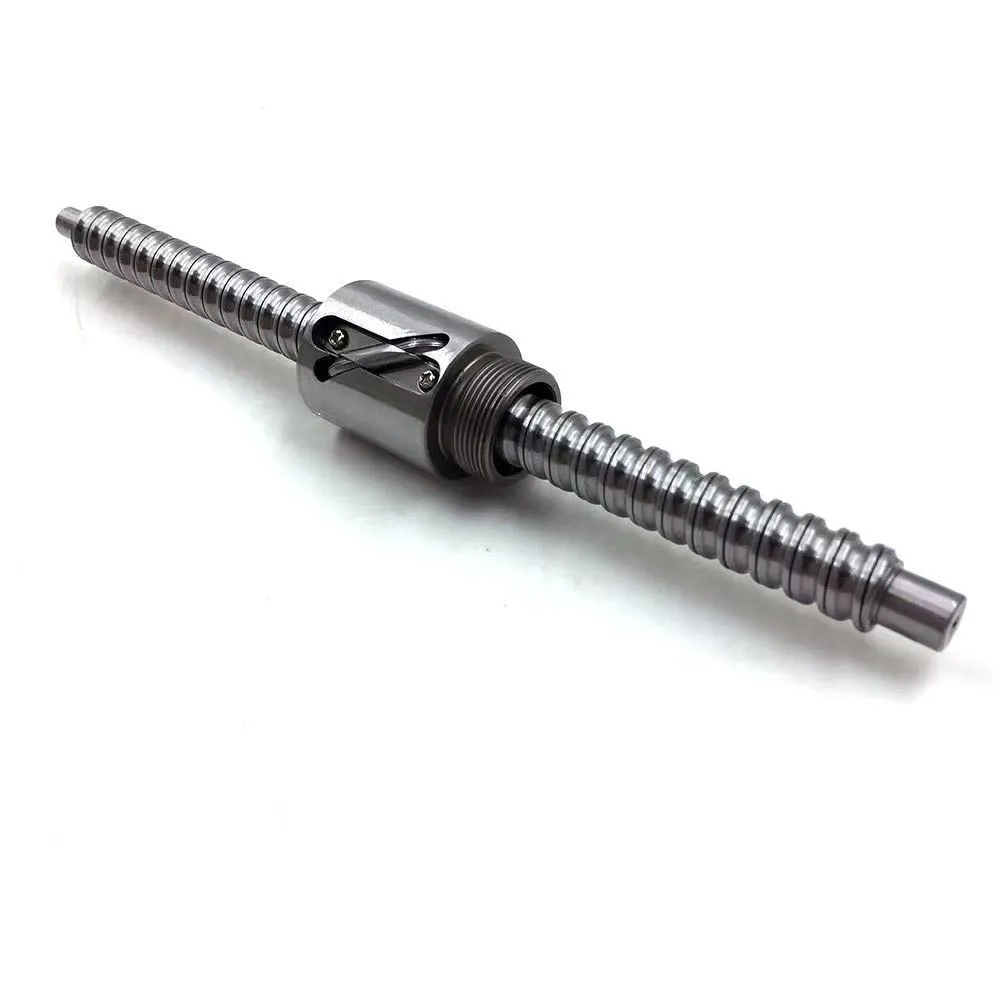
Application Case Studies: Ball Screw Technology in Action
To truly appreciate the transformative impact of ball screw technology, examining its real-world application across various industries provides invaluable insight. These case studies highlight how precision, efficiency, and reliability, inherent to products like the SFU1605 C3 Ball Screw Ground Ball Screw, translate into tangible benefits for businesses.
Case Study 1: High-Precision CNC Machining Center
A leading aerospace component manufacturer faced challenges in achieving the stringent dimensional tolerances and surface finishes required for complex turbine blades using their older machining centers equipped with lead screws. The cumulative pitch error and significant backlash of the lead screws limited the attainable precision, resulting in higher scrap rates and longer cycle times due to multiple finishing passes. After migrating to new CNC machines equipped with C3 grade ground ball screw systems on all linear axes (X, Y, and Z), their operational metrics significantly improved. The pre-loaded ball screw and ball nut assemblies virtually eliminated backlash, ensuring positional repeatability within +/- 2 micrometers. This drastic improvement in precision enabled them to consistently achieve sub-5 micron dimensional accuracy on critical features and reduce surface roughness by 30%. Furthermore, the high efficiency of the ball screws reduced the power consumption for axis movement by approximately 40%, contributing to lower energy bills and a greener manufacturing footprint. The reduced friction also meant less heat generation, which minimized thermal expansion of the machine components, preserving accuracy during long machining operations. The overall production throughput increased by 25% due to faster feed rates and reduced need for rework, demonstrating a clear return on investment. The transition showcased how a fundamental upgrade in linear motion components can unlock higher levels of precision and productivity, validating the critical role of the ball screw bearing system in high-performance machine tools.
Case Study 2: Automated Medical Imaging System (MRI)
A manufacturer of advanced medical imaging equipment sought to improve the patient experience and diagnostic accuracy of their new MRI machine. This required extremely smooth, silent, and precise movement of the patient table, capable of handling varying patient weights while maintaining consistent positioning for image acquisition. Traditional hydraulic or pneumatic systems proved too noisy, prone to leakage, and lacked the necessary positional accuracy for medical applications where even minor deviations can impact diagnostic quality. The solution involved implementing custom-designed, low-noise ball screw assemblies for the patient table's linear motion. These ball screws featured precision-ground threads, optimized ball screw balls for quiet recirculation, and specialized low-friction seals to minimize operational noise. Furthermore, they were manufactured from non-magnetic stainless steel to prevent interference with the powerful magnetic fields of the MRI. The system achieved sub-millimeter positional accuracy with virtually no vibration or audible noise during movement, significantly enhancing patient comfort and enabling clearer, more reliable image data. The inherent efficiency of the ball screws also reduced the power draw compared to alternative actuation methods, aligning with hospital energy efficiency goals. This application exemplifies how customized ball screw solutions can address highly specialized requirements, where precision, quiet operation, and specific material properties are non-negotiable for critical human-centric technology.
Case Study 3: Large-Scale Water Treatment Plant Sluice Gate Actuation
A municipal water treatment facility needed to upgrade its large sluice gate control systems, which previously relied on high-maintenance, low-efficiency trapezoidal lead screws. These gates, essential for regulating water flow, required substantial force to operate and were subject to harsh outdoor conditions, leading to frequent breakdowns and high energy costs. The solution involved replacing the aging lead screws with robust, heavy-duty custom ball screw assemblies specifically designed for outdoor, corrosive environments. These ball screws featured larger diameters, coarser leads for higher speed, and robust sealing mechanisms to prevent ingress of water, dirt, and debris. Furthermore, they were made from corrosion-resistant materials and coated with durable protective layers to withstand prolonged exposure to humidity and various water chemistries. The upgrade resulted in a remarkable 60% reduction in power consumption for gate actuation due to the superior efficiency of the ball screws, contributing to significant operational savings. Maintenance intervals were extended from quarterly to annually, drastically reducing labor costs and downtime. The improved efficiency also meant less wear on the driving motors and gearboxes, extending the life of the entire system. This case demonstrates the ability of custom-engineered ball screw solutions to deliver unparalleled reliability, efficiency, and longevity in severe industrial infrastructure applications, proving their value far beyond typical factory automation.
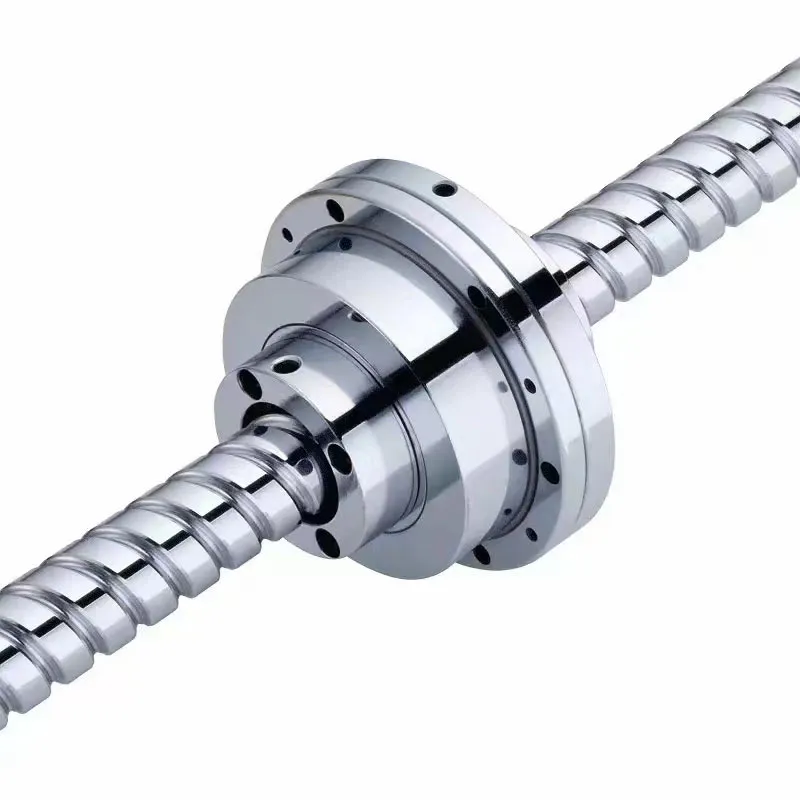
Ensuring Trust and Reliability: Quality, Support, and Beyond
For B2B buyers and engineers, the decision to invest in ball screw technology, particularly for critical applications, extends beyond technical specifications to encompass the reliability, support, and long-term commitment of the supplier. Establishing trustworthiness and authoritativeness is paramount in this high-stakes environment. Our commitment to quality is underpinned by adherence to stringent international standards. For example, our manufacturing facilities operate under ISO 9001:2015 certified quality management systems, ensuring that every SFU1605 C3 Ball Screw Ground Ball Screw, along with all our products, meets rigorous quality benchmarks from raw material sourcing through to final inspection. We also align with specific industry standards such as ISO 3408 for ball screw dimensions and tolerances, and JIS B1192 for accuracy, providing a verifiable guarantee of performance and interchangeability.
Beyond certifications, our authoritative standing in the linear motion industry is built on decades of experience and numerous successful partnerships. We have supplied thousands of ball screw and ball nut assemblies to leading manufacturers in diverse sectors, including automotive, aerospace, medical, and semiconductor industries. Our extensive service history, spanning over 15 years in precision motion control, allows us to leverage a vast knowledge base in solving complex linear motion challenges. This experience is reflected not just in our products but also in our comprehensive application engineering support, where our experts collaborate closely with client teams from design conceptualization through to implementation, ensuring optimal integration and performance. We frequently publish technical whitepapers and participate in industry forums and academic collaborations, contributing to the advancement of linear motion technology. For example, our research into advanced lubrication techniques for ball screw bearing life extension has been presented at international precision engineering conferences, further cementing our expertise and commitment to innovation. Regular independent third-party audits and rigorous in-house testing, including accelerated life testing and extreme load tests, provide empirical data that consistently validates the superior performance and durability of our products under real-world conditions.
To foster complete trustworthiness, we provide transparent information regarding product performance, delivery timelines, and post-sales support. Our typical lead time for standard SFU1605 C3 Ball Screw orders ranges from 2-4 weeks, with expedited options available for urgent requirements, while custom ball screw solutions are quoted based on complexity and volume. Each product comes with a comprehensive warranty against manufacturing defects, typically ranging from 12 to 24 months, underscoring our confidence in product reliability. Our dedicated customer support team is available globally, offering technical assistance, troubleshooting, and maintenance guidance, ensuring minimal downtime for our clients. We offer extensive documentation, including detailed installation guides, lubrication recommendations, and performance curves, all designed to empower our customers with the knowledge to maximize product lifespan and efficiency. Furthermore, our commitment to customer satisfaction is evident in our proactive feedback loops and continuous improvement initiatives, directly incorporating customer insights into our product development cycle. The consistency of our product quality and the responsiveness of our customer service are repeatedly highlighted in customer feedback, which often emphasizes not just the high performance of our ball screw products but also the strong partnership and reliable support they receive throughout the product lifecycle.

Frequently Asked Questions (FAQs) about Ball Screw Systems
Q1: What is the primary difference between a rolled and a ground ball screw?
A1: The primary difference lies in their manufacturing precision and resulting accuracy. Rolled ball screw threads are formed by cold-rolling, which is a faster and more cost-effective process, typically yielding accuracy grades of C7 or C10. Ground ball screw threads are meticulously machined using precision grinding after heat treatment, achieving much higher accuracy grades (C0, C1, C3, C5). Ground ball screws offer superior positional accuracy, repeatability, and smoother operation, making them ideal for high-precision applications like CNC machine tools, while rolled ball screws are suitable for general automation where moderate precision is acceptable.
Q2: How do I calculate the expected service life of a ball screw?
A2: The expected service life (L10 life) of a ball screw is calculated using the dynamic load rating (Ca) from the manufacturer's specifications and the actual equivalent axial load (Fa) applied during operation. The formula is typically L = (Ca / Fa)^3 1,000,000 revolutions or the equivalent distance. Environmental factors, lubrication, and mounting conditions significantly influence actual lifespan. Consulting the manufacturer's technical manual or an application engineer is highly recommended for precise calculations and optimization.
Q3: What causes backlash in a ball and screw system, and how is it mitigated?
A3: Backlash, or axial play, in a ball and screw system typically arises from the necessary clearance between the ball screw balls and the raceway grooves to facilitate smooth operation. It also occurs due to manufacturing tolerances and component elasticity. To mitigate backlash, manufacturers employ various pre-loading techniques. Common methods include using oversized balls, double nuts with a spacer, or offset double nuts. Pre-loading creates a constant internal force that removes the axial clearance, resulting in zero or near-zero backlash, which is crucial for applications requiring high positional accuracy and repeatability, such as the SFU1605 C3 Ball Screw.
Q4: Can ball screw systems operate in harsh environments, such as those with dust, moisture, or extreme temperatures?
A4: Yes, ball screw systems can be designed and manufactured to operate effectively in harsh environments, though it often requires specific considerations and customizations. For dusty or moist environments, specialized seals, wipers, or bellow covers are incorporated to prevent contaminants from entering the nut assembly and damaging the recirculating ball screw balls. For corrosive environments, materials like stainless steel or specialized coatings are used. For extreme temperatures, custom alloys, heat treatments, and high-performance lubricants are selected. It is crucial to specify environmental conditions during the selection process to ensure the appropriate design and material choices are made for a durable solution.
Concluding Insights: The Future Trajectory of Ball Screw Technology
The journey through the intricacies of ball screw technology reveals its indispensable role in the modern industrial landscape, a role that is continuously evolving. From its meticulous manufacturing processes, ensuring unparalleled precision and durability, to its broad spectrum of applications across critical sectors such as aerospace, medical, and advanced manufacturing, the ball screw stands as a testament to engineering excellence. Its core advantages—high efficiency, exceptional accuracy, long service life, and the ability to handle significant loads—continue to drive its adoption as the preferred linear motion solution over traditional alternatives. The SFU1605 C3 Ball Screw Ground Ball Screw exemplifies these attributes, embodying the high standards of performance and reliability demanded by today's sophisticated machinery. As industries increasingly move towards higher levels of automation, precision, and energy efficiency, the demand for advanced ball screw solutions will only intensify. This includes a growing emphasis on miniaturized designs for compact systems, high-speed capabilities for increased throughput, and smart integration with IoT platforms for predictive maintenance and real-time performance monitoring. The future of ball screw technology is poised for continued innovation, with ongoing research into new materials, surface treatments, and lubrication systems aimed at further extending lifespan, reducing friction, and enhancing performance in even more extreme operating conditions. Furthermore, the development of even more specialized custom ball screw solutions will be crucial in meeting the bespoke requirements of emerging technologies and highly niche applications, ensuring that this foundational component remains at the forefront of linear motion control. The ongoing commitment to quality, backed by rigorous testing and adherence to international standards like ISO and JIS, combined with robust customer support and engineering expertise, will remain paramount in establishing and maintaining trust within the B2B ecosystem. As the backbone of precision linear motion, the ball screw will undoubtedly continue to be a critical enabler of technological advancement and industrial progress worldwide.
References and Further Reading
- SKF Knowledge Centre: Ball Screws Technical Guide. Comprehensive technical details on design, selection, and application of ball screws. Link to SKF Publication
- ISO 3408-1: Ball Screws — Part 1: Vocabulary and designation. International standard for ball screw terminology and classification. Link to ISO Standard Preview
- Machinery's Handbook (31st Edition). Standard reference for mechanical engineering, including detailed sections on screw threads and linear motion. Link to Publisher Information
- Journal of Precision Engineering and Manufacturing. Academic papers on advanced manufacturing techniques and precision components. Link to Journal Overview
- Modern Machine Shop: Ball Screws – Understanding Lead Accuracy. An industry article discussing the importance and measurement of ball screw accuracy. Link to Industry Article

